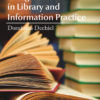The evolution of the ‘digital age’ has prompted profound changes in the library and information services environment. The internet has already had a major impact on how people find and access information, and now the rising popularity of e-books is helping transform reading habits. In this changing landscape, public libraries are trying to adjust their services to these new realities while still serving the needs of patrons who rely on more traditional resources. Digital Libraries are being created today for diverse communities and in different fields e.g. education, science, culture, development, health, governance and so on. Developments in information technologies and advances in telecommunications have revolutionized the worldwide information society. Access to information, via the Internet, is now ubiquitous. New techniques have facilitated the rapid transformation of data, information and knowledge into digital form, while leaps in software development have aided the provision of powerful new methods of knowledge management.
Library Management in Digital Age outlines the mechanisms and procedures necessary to ensure and improve library services, plan strategic goals, develop mechanisms for improving communications and financial management, expand the use of information technology, and use space and equipment in the Libraries more effectively. With the availability of several free digital Library software packages at the recent time, the creation and sharing of information through the digital library collections has become an attractive and feasible proposition for library and information professionals around the world.
This compendium is an attempt to present as well as to discuss the implications of these issues so that strategies can be devised to address them effectively and efficiently. This book discusses the new activities, methods and technology used in digitization and formation of digital libraries. It set out some key points involved and the detailed plans required in the process, offers pieces of advice and guidance for the practicing Librarians and Information scientists.













